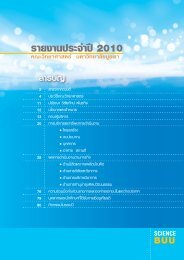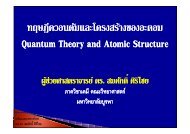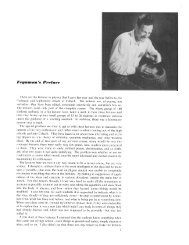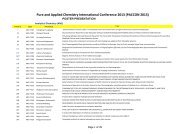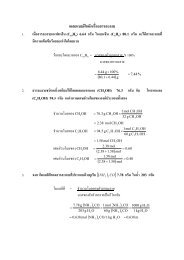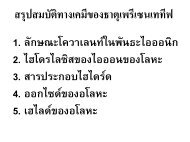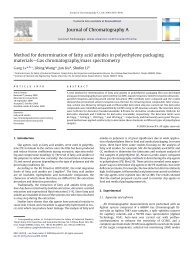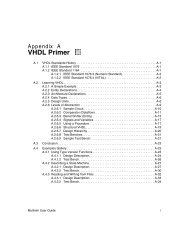USER MANUAL SWAN Cycle III version 40.72A
USER MANUAL SWAN Cycle III version 40.72A
USER MANUAL SWAN Cycle III version 40.72A
Create successful ePaper yourself
Turn your PDF publications into a flip-book with our unique Google optimized e-Paper software.
Description of commands 51<br />
This command can be used to specify the initial values for a stationary (INITIAL HOTSTART<br />
only) or nonstationary computation. The initial values thus specified override the default<br />
initialization (see Section 2.6.3). Note that it is possible to obtain an initial state by<br />
carrying out a previous stationary or nonstationary computation.<br />
DEFAULT<br />
ZERO<br />
PAR<br />
[hs]<br />
[per]<br />
[dir]<br />
[dd]<br />
HOTSTART<br />
MULTIPLE<br />
SINGLE<br />
’fname’<br />
the initial spectra are computed from the local wind velocities, using the<br />
deep-water growth curve of Kahma and Calkoen (1992), cut off at values of<br />
significant wave height and peak frequency from Pierson and Moskowitz (1964).<br />
The average (over the model area) spatial step size is used as fetch with local<br />
wind. The shape of the spectrum is default JONSWAP with a cos 2 -directional<br />
distribution (options are available: see command BOUND SHAPE).<br />
the initial spectral densities are all 0; note that if waves are generated in the<br />
model only by wind, waves can become non-zero only by the presence of the<br />
”A” term in the growth model; see the keyword AGROW in command GEN3.<br />
the spectra in the entire computational area are generated from integral<br />
parameters [hs] etc. in the same way as done for the boundary using the<br />
command BOUNDSPEC.<br />
the significant wave height.<br />
characteristic wave period of the energy spectrum (either peak or mean period,<br />
as determined by the options PEAK and MEAN in the command BOUND SHAPE).<br />
the peak wave direction (direction in degrees, Nautical or Cartesian convention,<br />
see command SET).<br />
the coefficient of directional spreading; a cos m (θ) distribution is assumed.<br />
See the options DEGREES and POWER in the command BOUND SHAPE.<br />
initial wave field is read from file; this file was generated in a previous <strong>SWAN</strong><br />
run by means of the HOTFILE command. If the previous run was nonstationary,<br />
the time found on the file will be assumed to be the initial time of computation. It<br />
can also be used for stationary computation as first guess. The computational grid<br />
(both in geographical space and in spectral space) must be identical to the one in<br />
the run in which the initial wave field was computed.<br />
input will be read from multiple hotfiles obtained from a previous parallel MPI run.<br />
The number of files equals the number of processors. Hence, for the present run the<br />
same number of processors must be chosen.<br />
input will be read from a single (concatenated) hotfile.<br />
In the case of a previous parallel MPI run, the concatenated hotfile can be created<br />
from a set of multiple hotfiles using the program hcat.exe, see Implementation<br />
Manual.<br />
Note: with this option you may change the number of processors when restart a<br />
parallel MPI run.<br />
name of the file containing the initial wave field.





